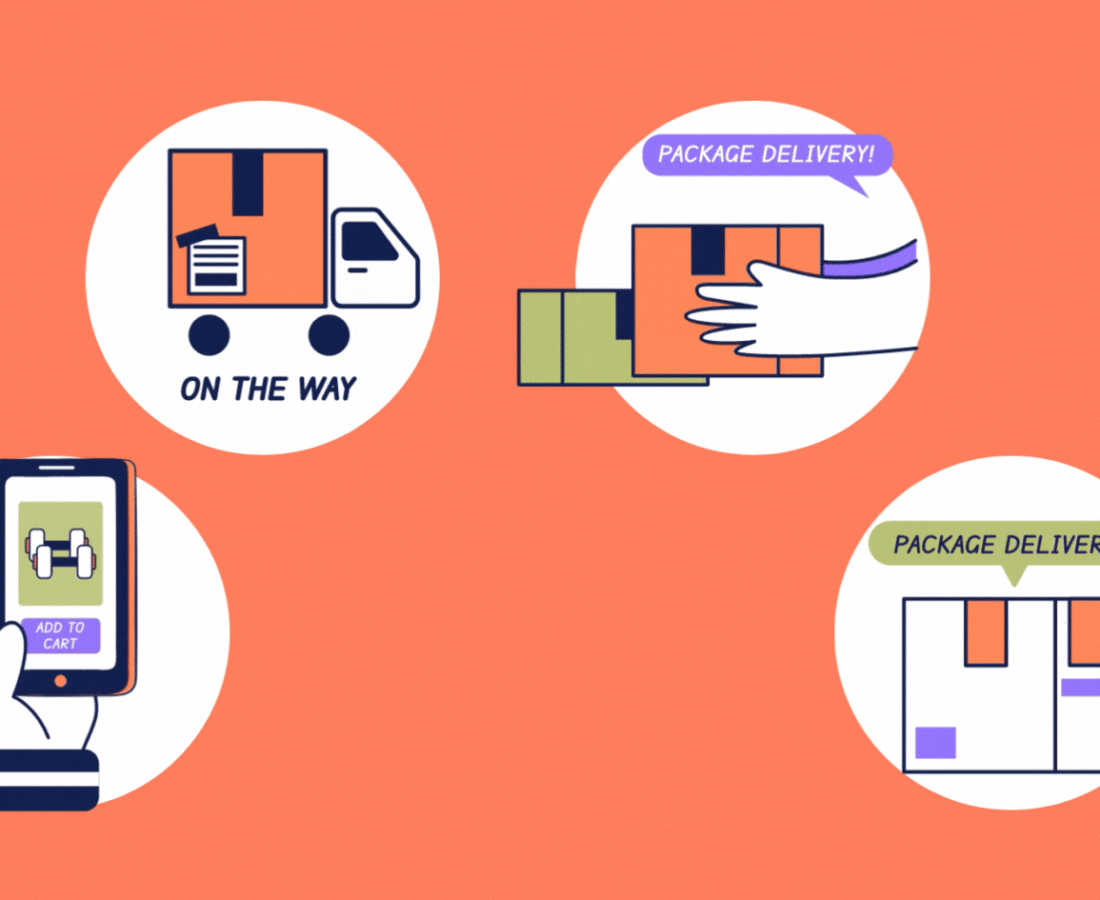Customer centricity has quickly become the name of the game for e-commerce companies as they look for ways to find competitive advantages in a crowded marketplace. From AI customer service bots to interactive product tours, businesses are meeting customer needs in increasingly sophisticated ways.
But the real key to success lies in successful supply chain management — and this requires much more than just a warehouse and good inventory planning. To deliver the seamless, high-quality delivery experience customers expect in 2023, e-commerce companies need to go beyond the basics if they are to continue to thrive.
Overcoming the Fragility of Global Supply Chains
It’s safe to say Covid-19 well and truly proved just how fragile global supply chains can be. And with a recession looking like a foregone conclusion in the coming year, it seems as though many companies are about to head out of the frying pan and into the fire.
With this in mind, here are five supply chain tips to ensure your e-commerce supply chain and delivery systems are up to the challenge.
Supply Chain Tips For Smooth E-commerce Delivery
1. Increase Supply Chain Visibility
Knowing where your goods are at all times is essential if you want to avoid unplanned disruptions. After all, how can you expect to keep customers informed of delays if you don’t even know where the goods are?
When you consider the sheer variety of carriers, subcontractors, and suppliers involved in most supply chains today, it’s easy to see why visibility is such an important issue. However, only 6% of companies report having full visibility into their supply chain, leading to a whole host of inefficiencies and missed performance objectives.
Fortunately, there are a handful of simple solutions that companies can implement to achieve the visibility they need. For example, investing in a smart tracking system can help to keep your supply chain in check and go a long way to improving real-time tracking and inventory management.
This is especially effective when combined with automated supply chain analytics and AI-enabled insights, which can help companies better identify areas of inefficiency, as well as where additional investments may be needed.
2. Improve Cash Flow
Supply chains often need to be supported by cash flow, and this can be difficult for small businesses in particular. One way to mitigate this issue is by developing a strong relationship with creditors and lenders who can provide funding when needed.
However, bank loans are not always the best solution since they require collateral and often come with hefty interest rates – not to mention the time it takes to secure the funding.
Fortunately, there are various alternative financing solutions, such as e-commerce-specific funding platforms like 8fig, that offer e-commerce stores access to the funds they need to keep their supply chains running smoothly and deliveries on time in the unpredictable economic climate of 2023.
3. Enhance the Customer Service Experience
Customers expect more from e-commerce businesses these days, and part of this is providing them with an enhanced delivery experience.
One way to do this is to provide customers with real-time updates on their orders, to keep them connected to the process and be kept informed of any delays or changes in delivery status.
Plus, if they encounter any issues with their deliveries, they’ll have an easier time getting in touch with customer service. This is especially beneficial for customers who are making urgent orders or dealing with perishable goods.
In order to do this, you need to ensure that your customer service team is well-equipped with the necessary tools and resources they need to effectively respond to customers. This could mean investing in AI-powered chatbots or advanced ticketing systems.
4. Work on Optimizing Last-mile Delivery
The last-mile delivery is often the most challenging and costly part of the supply chain. Moreover, this is the only element of the supply chain that directly involves the customer, so it’s important that you’re doing everything in your power to optimize it.
One way to do this is by leveraging data-driven insights and predictive analytics to plan routes more efficiently. This will help you reduce the cost of last-mile delivery and maintain your desired level of service.
Alternatively, you could consider using a third-party logistics provider such as Postmates or FedEx Fulfillment. This can often be a more cost-effective solution since these companies will have the necessary infrastructure and resources to manage the delivery process more efficiently.
Overall, you need to understand what your customers want and develop a strategy to ensure that last-mile deliveries are as streamlined, cost-effective, and hassle-free as possible. This could mean offering deliveries to self-service lockers, same-day delivery options, or even allowing customers to pick up orders at a local store.
5. Increase Warehouse Space
Okay, you may be wondering who on earth would want to invest in more warehouse space during a recession. But here’s the thing – as sales begin to dwindle and customers start pinching pennies, it’s likely that the price for warehousing space will begin to decrease.
This allows you to take advantage of lower monthly costs and expand your warehouse space. In turn, this allows you to store more inventory and take greater control and responsibility for the supply chain.
Furthermore, increasing the warehouse space can help you create a more efficient order fulfillment process, reduce shipping costs, and provide customers with faster delivery times.
In other words, while everyone else is playing defense and waiting for the recession to be over, you can play offense and take advantage of the situation and get your ducks in a row for when the economy starts to improve.
The Importance of Flexibility
Not everyone will be in a position to snatch up more warehouse space during the recession. But regardless of your current situation, it’s important to remain flexible and agile so you can quickly adapt to any changes or challenges that may arise.
If you are willing to think outside the box, there are plenty of opportunities to stay ahead of the competition. Whether it’s utilizing digital platforms for order fulfillment, partnering with local stores for last-mile delivery, or finding ways to optimize existing processes, there are plenty of strategies you can test out.
In conclusion, the strength and health of your supply chain will likely play an increasingly important role in the year to come. If you want to ensure a smooth delivery process and continue providing your customers with the best possible experience, you need to make sure that you’re making the necessary investments and staying flexible in an ever-changing landscape.
Good luck!
This is a guest post by Hazel Raoult
Hazel Raoult is a freelance marketing writer and works with PRmention. She has 6+ years of experience in writing about business, entrepreneurship, marketing, and all things SaaS. Hazel loves to split her time between writing, editing, and hanging out with her family.







